There are only a few places in the world where you can trek for days through the incredible mountain scenery and rustic rural villages. We believe that Nepal is the Holy Grail for trekkers and mountaineers. The country is the home to eight of the world’s highest mountain peaks. There are magnificent peaks, glacial villages, fluttering prayer flags on high mountain passes and charming teahouses on the trails where you can come after a hard days trek and bond with likeminded trekkers over a cup of hot tea. Trekking in Nepal is one of the best things that you can do there.
Planning a trip to Nepal? Read our complete Nepal Travel Guide that will help you to plan the trip.
Beyond the legendary peaks and summits, there are the quaint Sherpa villages, beautiful forests, ancient monasteries and yaks grazing here and there. Nepal is truly a backpackers’ dream, an adventure lover’s delight! Well, trekking in Nepal is not new and the country has a fantastic trekking infrastructure. And the best part about treks in Nepal is that it has trails for all. There are easy ones, moderate ones as well as difficult ones. You can simply choose your trek as per the difficulty level and the number of days you can spend. Here is a list of some of the best treks in Nepal recommended by various travel bloggers. Choose yours and start the epic journey!

Trekking in Nepal
1. Annapurna Circuit Trek
Recommended by Campbell & Aly of Stingy Nomads
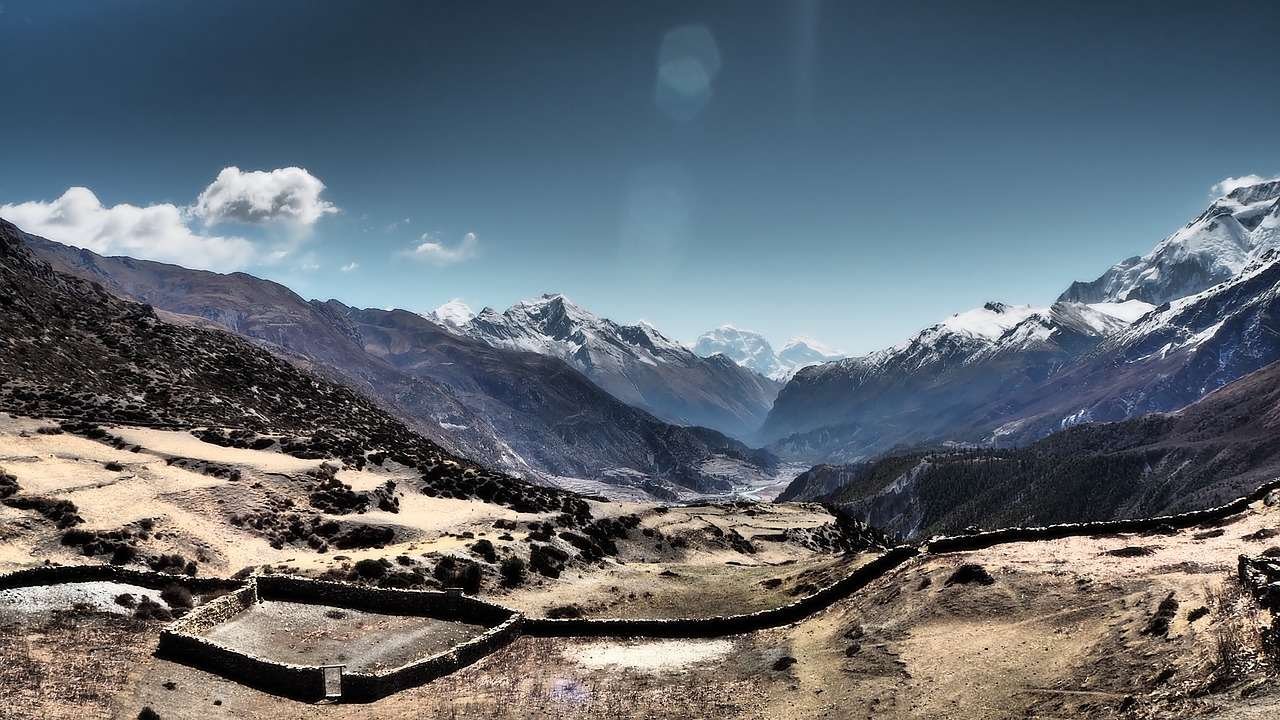
The Annapurna circuit trek is one of the most famous trekking routes in Nepal for a good reason. The scenery on the trek is incredibly diverse from the lush green forest and waterfalls at lower altitudes to rocky landscape and snow peaks at higher elevations. Trekking the Annapurna Circuit is a lifetime adventure for both amateur and experienced hikers.
The route goes through the Annapurna Conservation Aarea in the Western region of Nepal. It’s required for hikers to have the TIMS card and the Annapurna Permit for the route, both can be obtained at the Tourism Offices in Pokhara and Kathmandu for NPR 5000/US$45.
To complete the full circuit from Besisahar to Nayaul one will need about 2 weeks. It’s possible to cut it shorter by taking a jeep, the standard itinerary is about 10 days, most hikers start in Jagat and finish in Jomsom from where it’s possible to fly or to get a bus or a jeep back to Pokhara or all the way to Kathmandu.
The Annapurna Circuit is considered a moderate-difficult trek; a big part of the route is in the high mountains with the highest point of the trek Thorong La Pass is 5400m, altitude sickness is a real danger here. Another reason that makes the trek challenging is long and steep ascents and descents, some days you go 1000m up and down. It’s recommended (especially for inexperienced hikers) but not compulsory to have a guide or a porter, to hire one will cost between US$20 and US$25 per day, it includes their food and accommodation. The infrastructure of the circuit is quite good; the route is well-marked, there are many teahouses with private rooms, electricity, hot shower, and even wi-fi. Food of the trek is pretty diverse from Nepalese and Indian dishes like Dal Bat, momos and soups to Western food like pizza, burgers, muesli, etc. The average cost of the trek is US$22 per person per day including accommodation, food, transport, and permits. If you hire a guide/a porter add to this US$20.
- No of days: 12-16 days
- Difficulty: Moderate to Difficult
- Best Time: March – April and October – November
- Nearest trailhead: Besisahar and ends in Pokhara
2. Annapurna Base Camp Trek
Recommended by Charlotte Hockin of Our Taste For Life
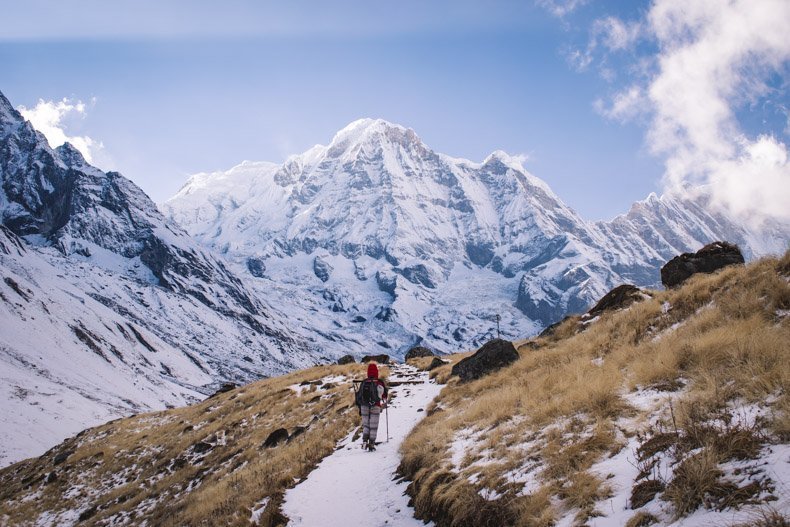
For a relatively short-term trek that leads you high into the Himalayas, Annapurna Base Camp is a perfect choice. Sitting at the height of 4130m, it is by no means an easy feat; however, with the right training and mindset, it is possible to complete the ABC trek in as little as 7-days.
Compared to others in the region, the Annapurna Base Camp trek is considered moderate in difficulty. And hikers of all ages, experience, and capabilities travel to take on the gruelling climb. It is a challenge that shouldn’t be underestimated. However, the reward of seeing the breathtaking Annapurna range at the summit makes it all worthwhile.
As well as considered one of the most accessible hikes in Nepal, it can also be one of the cheapest. This is because it is possible to complete the route without the accompaniment of a guide. The trail is in excellent condition from start to finish, it’s almost impossible getting lost, and mountain villages are bountiful. With this in mind, there are few concerns with completing the trek independently.
Another highlight of the Annapurna Base Camp hike is the comfort of accommodation along the trail. In each mountain village, you will find a selection of tea houses suitable for all budgets. Naturally, the higher you climb, the fewer options there are; however, you can still look forward to a comfy bed and a satisfying meal.
In conclusion, we would recommend the ABC trek to anybody of a reasonable fitness level. It’s the perfect entry-level hike for anybody who may not have experienced a multi-day trek before. At the same time, experienced hikers will relish the challenge. For us, it was one of the most incredible experiences of our lives. And to encounter the other-worldly landscapes of the Himalayas is a moment we will never forget.
- No of days: 7-10 days
- Difficulty: Moderate
- Best Time: March – April and October – November
- Nearest trailhead: Nayapul. The trek ends at Kande
3. Dhaulagiri Circuit Trek
Recommended by Agni of Experience Northeast India

The Dhaulagiri Circuit Trek is a difficult and rugged trek to the west of Annapurna. The trek starts from Pokhara and follows the Myagdi Khola to its source at the Chhonbardan glacier at the foot of Mt. Dhaulagiri, world’s seventh highest peak. It is quite a challenging trek where the rewards too are overwhelming. You can get a panoramic view of the Dhaulagiri, Tukuche Peak, Nilgiri, Annapurna, and Machhapuchhare, Thorong Peak and Kali Gandaki River with the world deepest gorge.
The trek passes through a number of picturesque villages with changing landscapes all along. The trek goes through 2 challenging mountain passes and crosses over the French pass (5360m) and the Thapa Pass (5200m) to get close views of mountain peaks of height more than 7000m. Dhaulagiri circuit trek is truly an ultimate adventure for the trekkers.
- No of days: 17-18 days
- Difficulty: Difficult
- Best Time: March – May and September – October
- Nearest trailhead: Beni, 2-hours drive from Pokhara
4. Everest Base Camp Trek
Recommended by Annie from Off Goes Annie
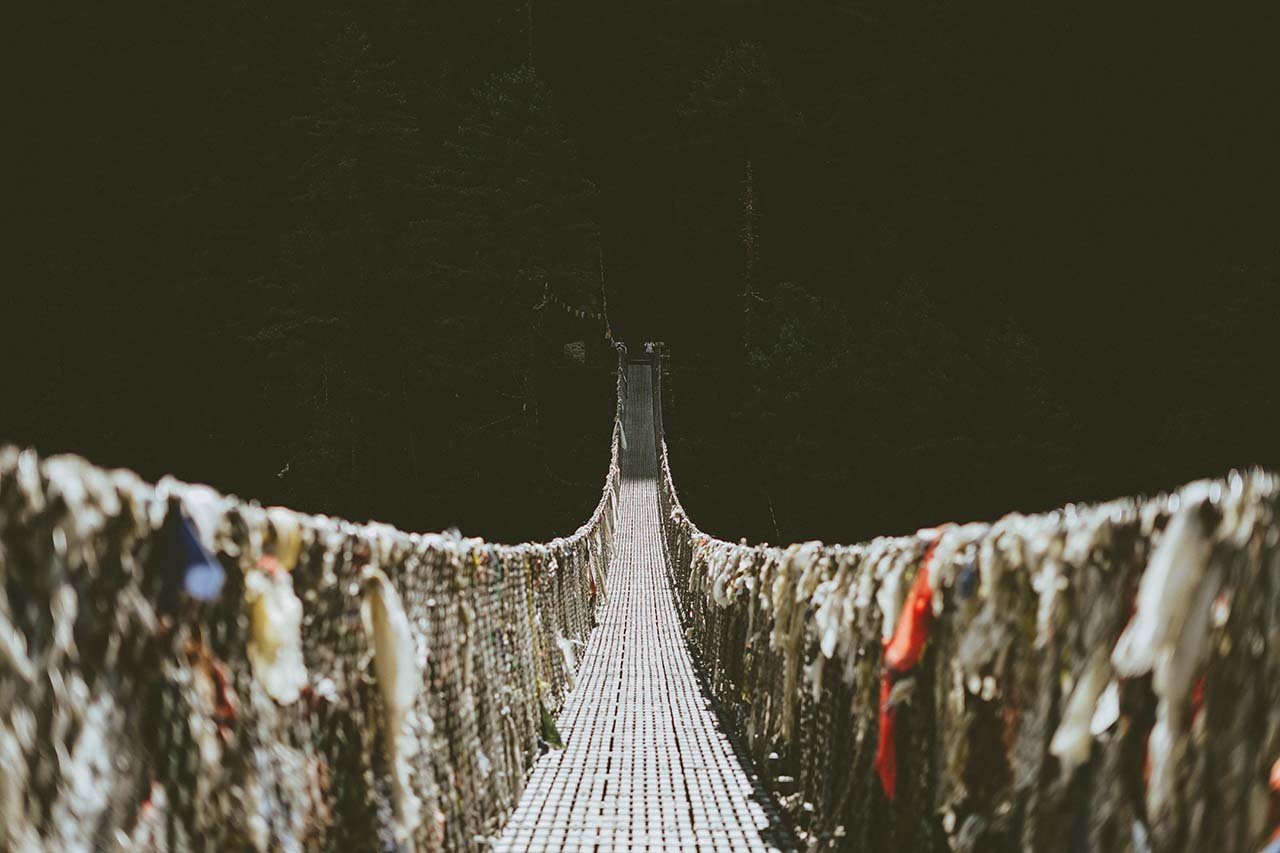
The Everest Base Camp trek is without a doubt one of my favourite hikes from anywhere in the world. Guaranteeing you some of the most beautiful mountain scenery along the way, the feeling of reaching the base camp of the world’s tallest mountain is totally incomparable.
Although a fair level of fitness is required to attempt to reach Everest Base Camp, it’s not as physically challenging as some other high altitude hikes. This is largely due to the very gradual ascent, allowing your body plenty of time to acclimatise for the lack of oxygen. At its highest point – interestingly on the trail around 30 minutes before you reach Base Camp – you’ll be at around 5600m above sea level.
Everest Base Camp trek will take you closer to Mt Everest and several other high altitude peaks. Allowing 14 days for the return hike, you’ll find yourself winding through small mountain villages, monasteries and tea houses.
Due to the high altitude, it is recommended that you trek with a guide and small group. Weather conditions can change rapidly in the region, and therefore safety must take priority. To include your return flight from Kathmandu into Lukla Airport, where you begin your ascent, along with 13 nights accommodation and meals in tea houses, it’s possible to find deals for around $600. Tea house accommodation is basic, but certainly fulfills your needs of a comfortable place to rest before the following day’s climbing.
- No of days: 14-16 days
- Difficulty: Moderate to Difficult
- Best Time: March – April and October – November
- Nearest trailhead: Namche Bazar
5. Gokyo Ri Trek
Recommended by Meg Atteberry of Fox in the Forest

If you want to lay eyes on Mount Everest, but don’t want to visit the over-crowded climber’s toilet that is Everest Base Camp, there’s no better view of the world’s tallest peak than from Gokyo Ri. This 11-day trek makes its way up to 5,357 meters for an absolutely breathtaking 360-degree view of the Khumbu Valley.
You slowly make your way to the famous town of Namche Bazaar. After a rest day of acclimatizing, you branch off of the pedestrian super-highway to Everest and make your way down quiet hiking trails to small towns leading towards Gokyo Ri.
Along the way, you have the opportunity to spot incredible mountain wildlife and learn about local culture and customs. The trek terminates in the small village of Gokyo, where seven sacred lakes line the trekking trail. Awake early in the morning to make the trek up to the summit of Gokyo Ri and watch the sunrise over Mount Everest. If you’re lucky, you’ll be one of just a few trekkers on the summit enjoying unbelievable, secluded views. You’ll also be able to spot the mighty Kanchenjunga glacier and 3 other 8,000-meter peaks including Cho Oyu, Nuptse, and Lhotse peaks.
One of the best practical tips for visiting Nepal is to hire a trekking guide. Even experienced trekkers should hire a guide in order to promote a healthy tourism economy in Nepal. The cost of a private, guided trek, including lodging, permit fees, in-country flight, all of your meals, several days of sight-seeing and accommodation in Kathmandu, is around $1,100 for 14 days.
- No of days: 10-12 days
- Difficulty: Moderate to difficult
- Best Time: March – April and October – November
- Nearest trailhead: Namche Bazar
6. Kanchenjunga Base Camp Trek
Recommended by Agni & Amrita of Tale of 2 Backpackers
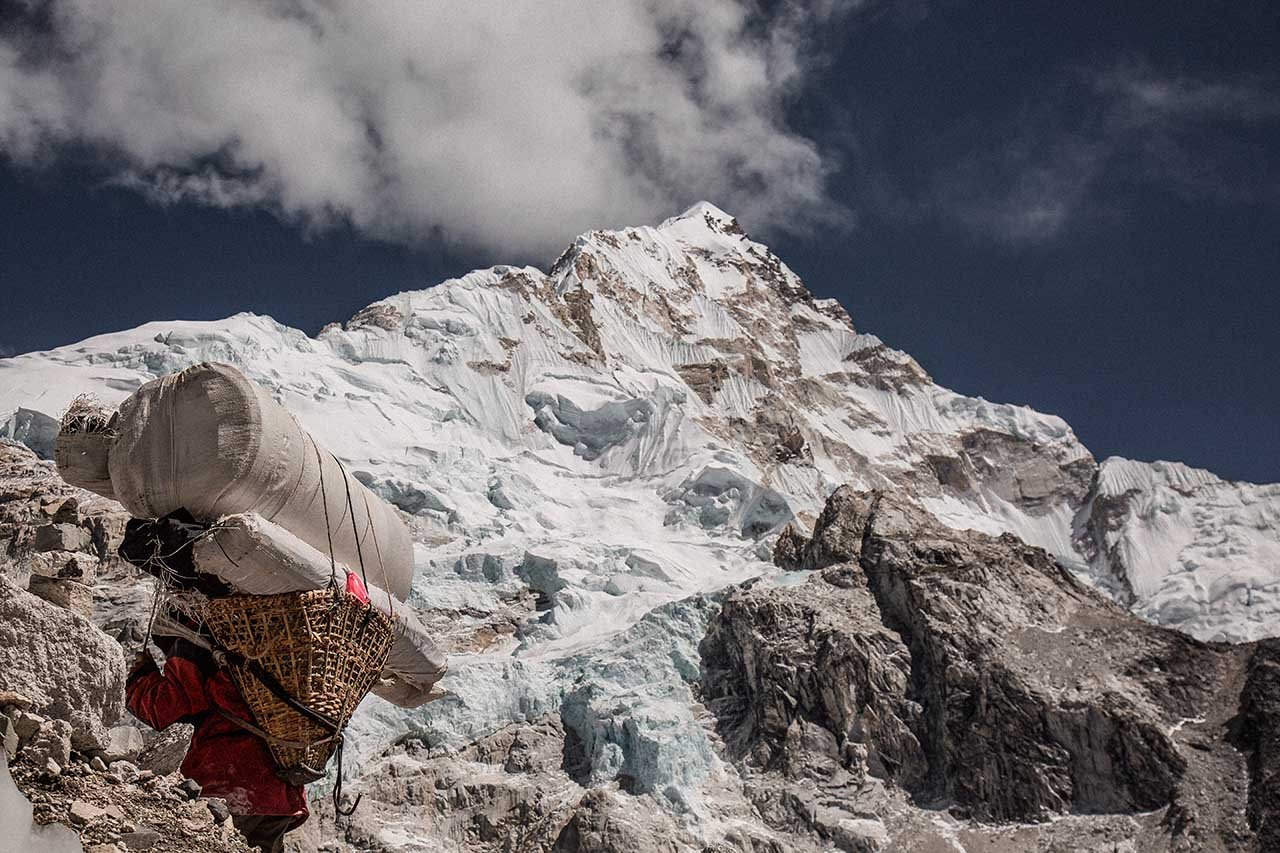
The third highest peak, Kanchenjunga (8586m) in the world stands tall in the northeastern part of Nepal bordered by Sikkim, India. While in Sikkim, Kanchenjunga is considered to be a guardian deity and is revered by all the Sikkimese people, Kanchenjunga Base Camp Trek falls in one of the most beautiful regions of Nepal, the Arun Valley. In Tibetan Kanchenjunga means ‘five great treasures of the snow’.
Kanchenjunga Base Camp trek forms a part of the Great Himalayan Trail (GHT) and falls in the Kanchenjunga Conservation Area covering an area of 2035 sq km. This area is the home to a variety of flora and fauna. The route to Kanchenjunga Base Camp thus offers a diverse landscape from alpine grasslands to sub-tropical forests, river valley, glacial moraines and rocky scree slopes. Throughout the trek, you can get a panoramic view of some of the greatest mountain ranges like Kanchenjunga, Everest, Lhotse, Makalu and others. The trek is a long one taking almost 26 days and has tea houses and homestays on the trail.
- No of days: 25-26 days
- Difficulty: Difficult
- Best Time: March-May and October – December
- Permits: Kanchenjunga Conservation Area Permit & Kanchenjunga Restricted Area Permit. Costs about USD 50 per head.
- Nearest trailhead: Suketar
7. Langtang Valley Trek
Recommended by Alexei of Travel Lexx

If you are looking for a teahouse trek alternative to increasingly busy Everest Base Camp and Annapurna Circuit trails, the Langtang Valley Trek might just be the ticket. While not strictly off-the-beaten-path, you’ll encounter just a fraction of trekkers that are plying Nepal’s famous routes. This is partly due to the devastating earthquake of 2015 which destroyed villages and continues to affect local communities.
Accessed by a bone-rattling ten-hour bus ride from Kathmandu, the town of Syabrubesi is the start and endpoint of this in-and-out trek. The classic route is to head to Kyanjin Gompa (3800m, 2/3 days) and embark on some of the numerous day hikes from the valley’s last inhabited village before retracing your steps.
The hiking takes in lush green forests at lower altitudes and snow-covered peaks, glaciers and alpine grassland as you head higher. The scenery is some of the most stunning in Nepal. The basic but comfortable teahouses – many rebuilt after the earthquake – are a perfect place to bed for the night after a hearty meal of dal-bhat and a pot of mint tea.
Once in Kyanjin Gompa, don’t miss out on a 24km return hike to Langshisha Kharka. Get to within a stone’s throw of the Tibetan border as you hike deeper into the valley along a river under a watchful eye of yaks. Alternatively, climb the 4984m Tsergo Ri, visit nearby lakes or just unwind with some delicious coffee and cake from the amazing Dorje Bakery.
More than anything, this trek provides an opportunity to engage with and help communities still rebuilding their lives after a natural disaster.
- No of days: 7-8 days. 3 days to Kyanjin Gompa, 2-3 days in Kyanjin Gompa, 2 days to Syabrubesi
- Difficulty: Easy to moderate
- Best Time: March – April and October – November
- Practical Info: Buses and jeeps depart daily to Syabrubesi from Kathmandu.
8. Manaslu Circuit Trek

Epic scenery, local culture and a 5100m high Himalayan Pass – Manaslu Circuit Trek offers all that is expected of a classic trek in Nepal. Of late the Manaslu trail is gaining popularity and is now helmed as the “New Annapurna”. The circuit is a great trek with stunning views of Mt. Manaslu (8163m), the eighth highest peak in the world and the Ganesh Himal range. All along the trail, you will find an interesting mix of Buddhist and Hindu villages.
In spite of gaining popularity in the last few years, Manaslu Circuit Trek is far less crowded than the other classic treks in Nepal like the EBC and ABC. The trek is remote, yet there are tea houses at every stage so that trekkers do not need to bring camping equipment and food with them. This off the beaten trail offers diverse scenery like sub-tropical jungles at a lower elevation and stark Himalayan landscapes at the upper elevations. The trail circumnavigates the Mt. Manaslu before reaching the highest point at Larkya Pass (5100m). The pass links the Budhi Gandaki with the Marsyangdi valley.
- No of days: 13-15 days
- Difficulty: Moderate to difficult
- Best Time: March – April and October – November
- Permit: Required
- Nearest trailhead: Arughat. It is a circular trek starting at Arughat and ending at Besisahar
9. Nagarkot trek
Recommended by Alexander of Destinavo

The Nagarkot trek is the easiest trek near Kathmandu and it can be completed in just one day. It’s one of the safest treks in Nepal and it’s a great trail to warm up or to go with children. From Nagarkot, you can enjoy stunning views of some of the highest mountains in the world on a clear day and it’s very peaceful.
You can even get a glimpse of Mount Everest from here. The highest point of the Nagarkot Trek is 1800 meters, and from there you can watch the sunrise and sunset. If you’re travelling Nepal on a budget or have limited time in Kathmandu, but still want to see the mountains, the Nagarkot trek is the best option.
You don’t require any permit, and you can walk free on the trail. The difficulty of the trek is easy, so almost anyone with a reasonable health condition can do it.
Nagarkot can easily be reached by bus from either Kathmandu or Bhaktapur. Upon arrival in Nagarkot, you will find some local shops and simple restaurants serving Nepalese food. I recommend staying overnight at the hotel called “the hotel at the end of the world” which has an impressive view of the mountains and friendly staff.
- No of days: 1 day
- Difficulty: Easy
- Best Time: all around the year
- Permits: Not required
- Nearest trailhead: Nagarkot
10. Poon Hill Trek
Recommended by Hannah Thomas of Solar Powered Blonde

I would highly recommend the Poon Hill trek near Pokhara in Nepal. If you aren’t a serious hiker but would still like the experience of a trek here, Poon Hill is perfect. This is a five-day trek, three days up and two days down. The trek up to the top of Poon Hill is mainly steps that go up the whole of the mountain. The parts that are not steps are not very steep and most of it is on steady ground. The first two days you will be walking for most of the day, and stopping at guesthouses along the way for food and to sleep. On the third day, at the highest guesthouses, be prepared to put some extra layers on. It gets very cold up here and you will be sitting around a fire in the evening. The third morning, the trek starts before sunrise, and at the top you will be rewarded with the most incredible view of the Himalayas. The two days down is also incredible, as the area you walk through is so lush and beautiful. I would recommend getting a guide. As a group of four girls, we chose to go with the Three Sisters, a organisation with female guides. The guide then organises where to eat and where to stay each night, so you don’t have to. You also have to pay for a permit to trek here. I would recommend getting plenty of snacks to keep you going, as you walk higher, the snacks get more and more expensive and you will need them with all the walking. The menus at the guesthouses on the way are limited, and the best food is rice and curry for every meal. It was one of the most scenic and rewarding treks I’ve ever done.
- No of days: 4-5 days
- Difficulty: Moderate
- Best Time: March – April and October – November
- Nearest trailhead: Pokhara
11. Three Passes Trek
Recommended by Erika from Erika’s Travelventures

If you are looking for one of the biggest and baddest hikes in Nepal that amateur trekkers can do, consider the Three Passes Trek.
This trek takes about 18-25 days depending on how many rest days you take. The three highlights are going over three high mountain passes, all 5300m+ in elevation and with incredible views: Kongma La, Cho La, and Renjo La.
I took a DIY approach to trek the Three Passes Trek, and it cost me $700 USD total. I didn’t hire a guide or porter, I took a jeep from Kathmandu to Salleri and hiked three extra days to Lukla (instead of flying directly into Lukla), and spent a total of 25 days in the mountains.
The food and accommodation situation is the same to the Everest Base Camp trek, with teahouses in villages providing for the trekkers. The first days of trekking, whether you start from Lukla, Jiri, or Salleri, overlaps with the Everest Base Camp trek.
Despite some overlap, this hike is much more difficult and rewarding than hiking to just Everest Base Camp – in fact, the popular Everest Base Camp Trek and Gokyo Ri Trek are mere side treks from the Three Passes circuit.
Pass days require you to ascend hundreds of meters up to the mountain pass, then descend steep terrain back down to the next village. It can take up to 12 hours to get from teahouse to teahouse. Two of the three passes also require you to cross over glaciers of crumbling ice, so crampons are highly recommended.
I hiked the Three Passes with two friends, and we met other solo trekkers along the way to create a big group to go over the mountain passes together with. It’s important not to go alone over the mountain pass, but it’s easy to meet others at teahouses that you can start the day with. Tour agencies may say a guide is highly recommended for this trek, although many people have trekked it independently, like myself, without any problems.
- No of days: 18-25 days
- Difficulty: Difficult
- Best Time: March – April and October – November
- Nearest trailhead: Namche Bazar
12. Tsho Rolpa Lake Trek
Recommended by Michelle Della Giovanna of Full Time Explorer

The Tsho Rolpa Lake Trek is one of Nepal’s upcoming treks. Although it’s considered extremely off the beaten path, the trekking trail is very well maintained and is easy to navigate. I’d even go as far as saying that it is the nicest trekking trail I’ve been on in Nepal. The interesting thing about this trek is that it goes through Rolwaling Valley which acts as a yak sanctuary. It’s one of the few places where you can go and see yak roaming free in their natural habitat.
The trek can be done in as few as 7 days or as many as 10 days. Choosing an itinerary for Tsho Rolpa will depend on how physically fit you are, your time frame, and whether or not you want to set aside travel days. Getting to the start of the trek requires a long and bumpy bus/jeep ride from Kathmandu to Singati Bazaar. The ride takes about 8 hours on a good day.
Although this trek only reaches an altitude of 4,558 m (14,954 ft), it is fairly difficult. The altitude gains each day are larger than most treks which can make acclimating hard. You’ll find yourself going uphill constantly with very few flat areas along the way. The good news is the paths are well taken care of and there are stairs going up the steepest areas.
The Tsho Rolpa Lake Trek is up and coming, so housing options are limited. There is at least one teahouse in each major village along the way. The teahouses provide both local and western cuisine. Most of the trek is located in a no kill zone which means you’ll only find vegetarian food. Those who prefer meat will need to pack dried meat and carry it with them.
If you choose to go without a guide or porter, it’ll cost about $250 USD per person. A guide costs about $25 a day and a porter costs about $15 a day (excluding tips). This does not include their food and lodging, so you will also need to pay for that. This area does not offer free food and lodging to guides/porters (other trekking routes in Nepal do). Overall, this is an amazing trek for those who want to avoid the crowds and have a unique experience!
- No of days: 7-10 days
- Difficulty: Moderate to difficult
- Best Time: March – May and Sept – November
- Nearest trailhead: Singati Bazar
13. Upper Dolpo Trek
Recommended by Agni & Amrita of Tale of 2 Backpackers
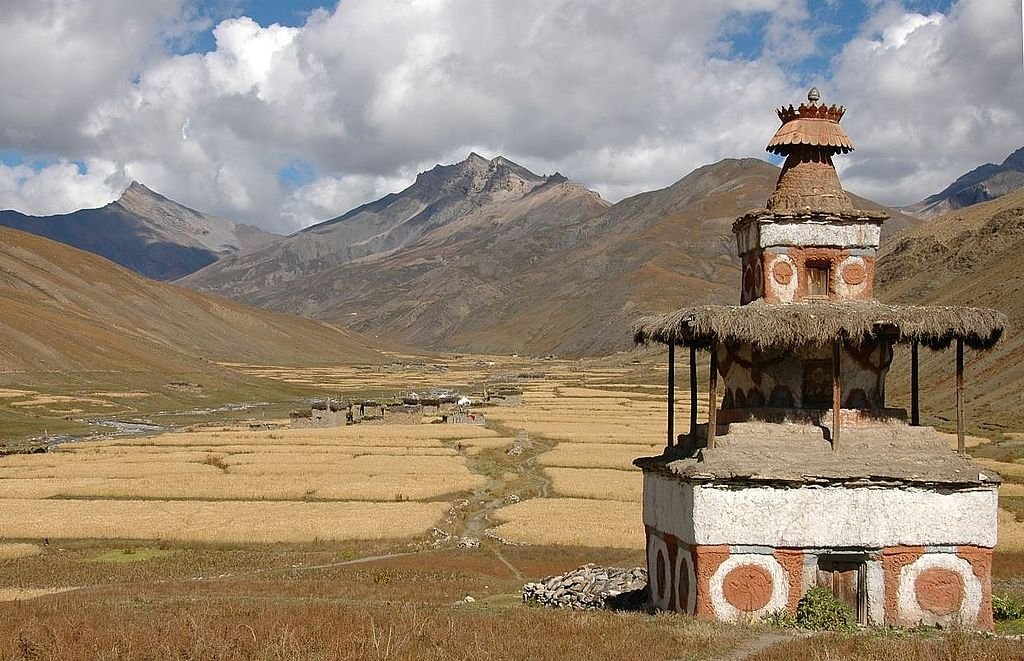
Upper Dolpo Trek is located in the western part of Nepal towards the north of Dhaulagiri range and is indeed a paradise unexplored. This remote valley is naturally and culturally rich. Just like Upper Mustang trek, you will find Tibetan Buddhist culture preserved in this region also. The trek is for the ardent trekkers, for you have to cross 3 passes all more than 5000+ metres.
The area falls under the ancient salt trade route. The area between the Tibetan plateau and the majestic Dhaulagiri massif is rich in ancient Tibetan culture. You will come across a number of ancient monasteries like the Shey Gompa as well as the picturesque Shey Phoksundo Lake. The landscape is totally fascinating with Tibetan styled villages, barren scenery and magnificent mountain peaks. You might also encounter nomadic tribes with their herds of yak, mules and horses. The experience of the Upper Dolpo trek is not merely fascinating, it is also gratifying.
Upper Dolpo is a restricted area and you have to pay a restricted area permit (USD 500 per head for a period of 10 days). This makes the cost of the trek a tad expensive.
- No of days: 20 days
- Difficulty: Difficult
- Best Time: April – May and September – October
- Permits: Restricted area permit required. Minimum 2 trekkers are needed for the trek.
- Nearest trailhead: Juphal
14. Upper Mustang Trek
Recommended by Agni & Amrita of Tale of 2 Backpackers
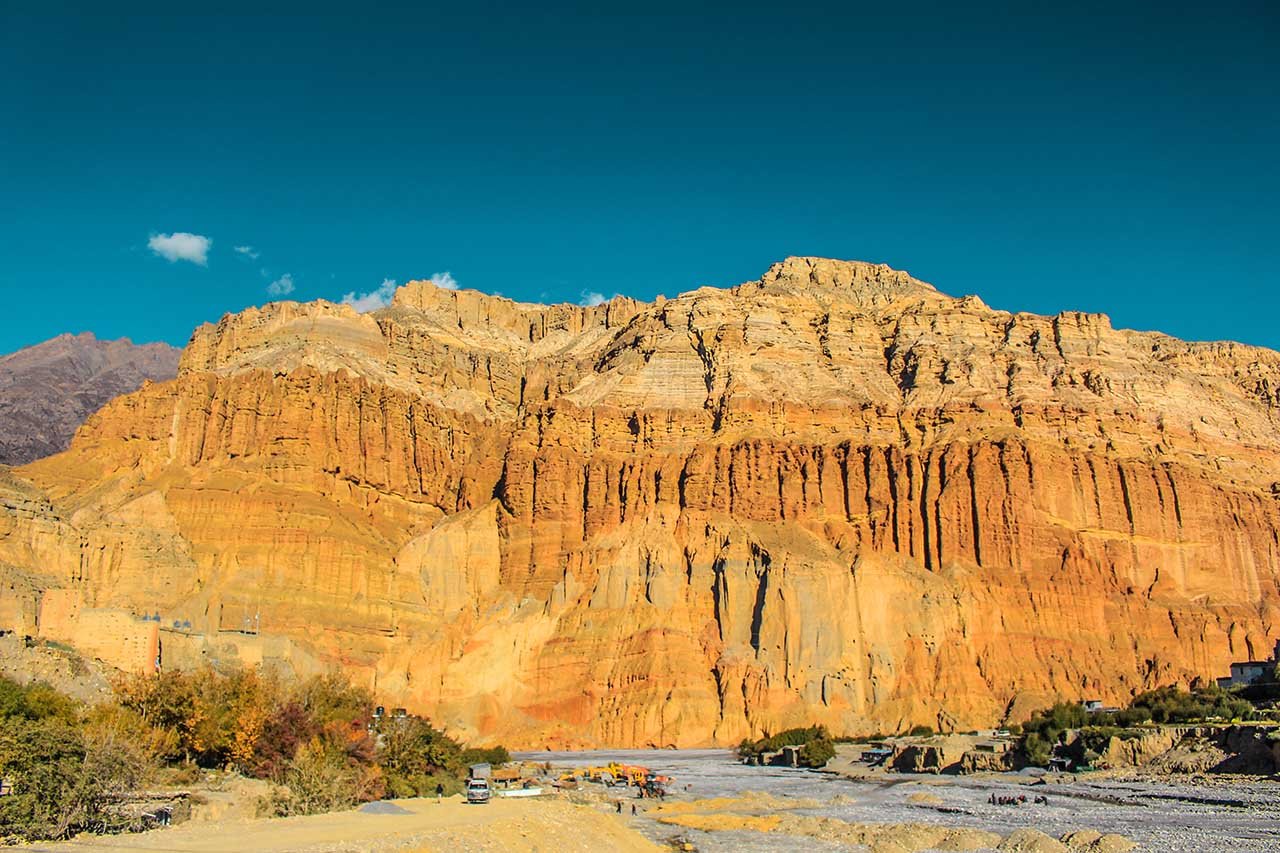
Upper Mustang Trek in the Mustang Valley of Nepal is distinctly different from the usual treks of Nepal. Geographically Upper Mustang is a part of the Tibetan plateau and the landscape and climate of Upper Mustang are quite similar to that of Tibet, so by trekking in this region, you will actually get a feel of trekking in Tibet. The Mustang district was a separate kingdom within the boundaries of Nepal until 1950. The last king, the Raja of Mustang still has his palace at Lo Manthang, which was the capital of the kingdom.
The Upper Mustang Trek will take you to the copper coloured valleys, eroded canyons and deep gorges. You will encounter typical mud-brick houses and colourful prayer flags and mani walls. The remoteness and inaccessibility of the region have preserved the ancient Tibetan Buddhists traditions and culture. In this trek, you will not only see a different landscape but also a distinct culture.
Upper Mustang region was opened to non-Nepali trekkers only 15 years ago and still today the entry is highly restricted and permits are costly. To enter Upper Mustang, you have to travel further north of Kagbeni and this requires a special permit trekking permit and must be accompanied by a guide. The trek requires a minimum of 9 days starting and ending at Kagbeni. Upper Mustang falls in the rain shadow area like that of Ladakh in India and this trek can be done even in the monsoons. Mustang Valley remains windy and dusty throughout the year. Winters in Mustang valley are quite cold and trekking is best avoided during this time due to harsh weather.
- No of days: 10-12 days
- Difficulty: Moderate to difficult
- Best Time: May – October
- Permits: Restricted area permit required for the trek. Minimum 2 trekkers are needed for the trek.
- Nearest trailhead: Jomson
15. Mohare Danda Trek
Recommended by Imma of A World to Travel

The Annapurna Dhaulagiri Community Eco Trek Trail – aka. Mohare Danda Trek – runs near the bases of some of the highest mountains on the planet: the Annapurnas. It is not necessary to be a professional climber to do it and it is quite comfortable since the altitude reached is less than 3500m, which allows you to always sleep in a bed, eat freshly cooked food and not suffer acute altitude syndrome.
It is basically a trek that will remain in your memory because it makes you get out of the comfort zone a bit – compared to the standards of the first world.
The start of the trek is in Galeshwor and Tiplyang is reached at the end. The accommodation is produced in community lodges, which also provide food at a small cost. A good option is to do it in a group with a trusted and locally owned company such as Royal Mountain Travel. I wrote about my experience hiking the Annapurna Community Trek here.
- No of days: 5-6 days
- Difficulty: Moderate to difficult
- Best Time: October – May
- Nearest trailhead: Galeshwar
Tips for trekking in Nepal
Should you take a guide?
This is an important question faced by many trekkers while trekking in Nepal. While there are both pros and cons for guided trekking, the choice is ultimately yours. However, there are a few trekking trails in Nepal where taking a guide is mandatory like the Upper Mustang Trek, Upper Dolpo Trek etc.
Along the more popular and common trekking trails like the Annapurna and Everest region, you might not need a guide. These trails are well-marked and you will encounter a number of trekkers on the way. It also goes the same for the easier and shorter treks. But if you are going to trek in the restricted areas, it is highly recommended to take a guide. He will not only show you the way but will also ensure your safety and help you learn about the local Nepali culture. Personally, we prefer taking a guide with us, if not for very short and easy treks.
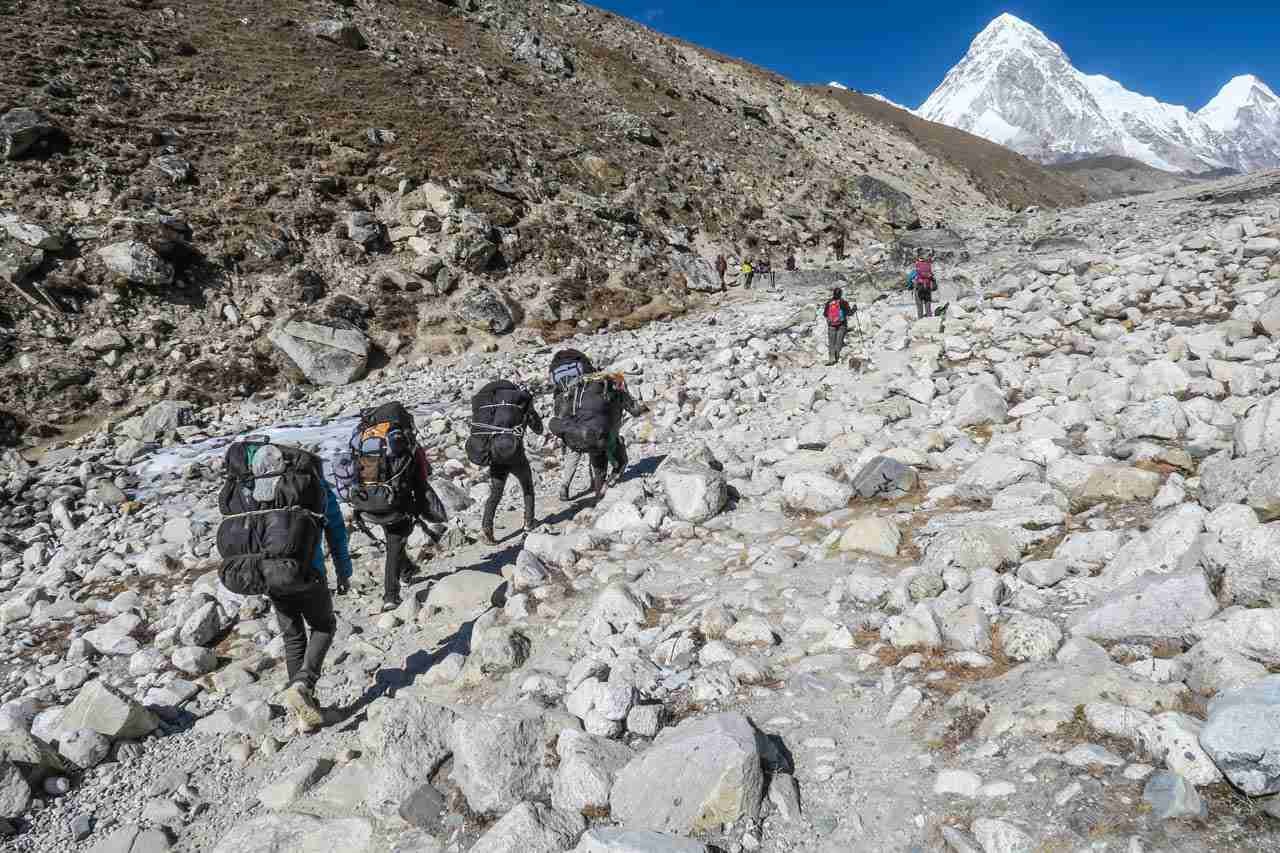
Guides and Porters in Nepal
Guides and porters are quite common in Nepal. While you would be needing a guide for the restricted areas, it is not mandatory to take them in many of the treks. In general, a guide will cost about $25-30 per day and a porter will cost about $10-15 per day. This is exclusive of tips. A guide can help you with the logistics, information and safety on the trek.
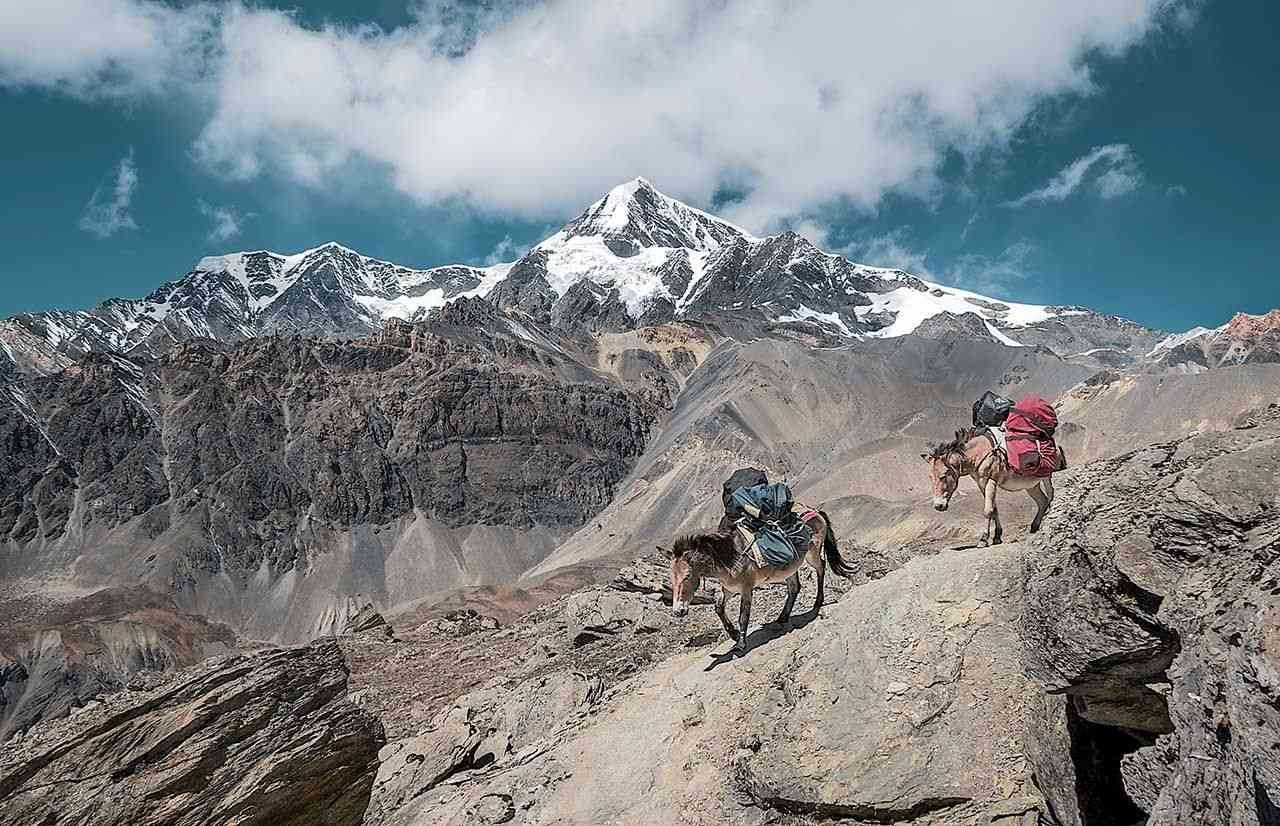
Research your trekking company
You can also book your treks from a trekking company. There are numerous trekking companies in Kathmandu and Pokhara. You can do some online research, read reviews and find a suitable trekking company. Before taking the service of a trekking company, ask them about what they are going to provide. Also, ask for an English speaking guide.
You can also arrive at Kathmandu and then decide on the trekking company.
Trekking and Acclimatisation: Don’t ignore your body
Acclimatization is important for any treks. So get educated about Acute Mountain Sickness (AMS) before starting your trek. Acclimatise your body, stay hydrated and listen to your body. The multi-day treks have days dedicated for acclimatization walks.

About Trekking Permits in Nepal
Trekkers can trek individually in Nepal as Free Individual Trekker (FIT) or in groups. However, there are some restricted areas, where individuals are strictly not allowed. If you are going through any trekking company, they will arrange for all the required permits. If you are doing it by yourself, you can apply for trekking permit online.
In Nepal, you will need a TIMS (Trekkers’ Information Management System) card. A TIMS card is a basic trekking permit you need for all treks in Nepal. Next, you will need permits for various areas whose cost can vary based on the region.
You can apply for TIMS at Nepal Tourism Board Office at Kathmandu. Along with TIMS, you can apply for Annapurna Sanctuary Permits and permits for Upper Mustang Valley as well.
To apply for TIMS, you will need
- Copy of your passport
- 2 passport sized photographs
- Trekking entry and exit dates
- A tentative itinerary
- Emergency contact numbers
The cost of TIMS card is NPR 2000 per person if you are an FIT and NPR 1000 per applicant in a group. The ACAP Permit also costs NPR 2000 if you are going independently.
Trekking Permit Fees in Nepal for restricted areas.
Upper Mustang: USD 500 per person (for the first 10 days); USD 50 per person /Day (beyond 10 days)
Upper Dolpo: USD 500 per person (for the first 10 days); USD 50 per person /Day (beyond 10 days)
Gorkha Manaslu Area: September – November: USD 100 per person/week; USD 15 per person/day (beyond 1 week)
December – August: USD 75 per person/week; USD 10 per person/day (beyond 1 week)

Responsible Trekking in Nepal
- The first and only rule in trekking and backpacking is “Leave no Trace”. Please adhere to it. As it is, the news of Mt. Everest becoming a huge garbage dump is always in news. Let us not add to it.
- Try not to buy bottled water bottles in the tea houses. It adds to the misery. Use water pills, filters and sterilizers instead.
- Do not litter. This I keep on saying in every post about trekking. Please keep Nepal beautiful and garbage-free for the next generation as well.
- Please respect the local culture. Follow the rules while visiting temples. Dress conservatively if it so demands.
- Ask for permission before taking photographs of a person.
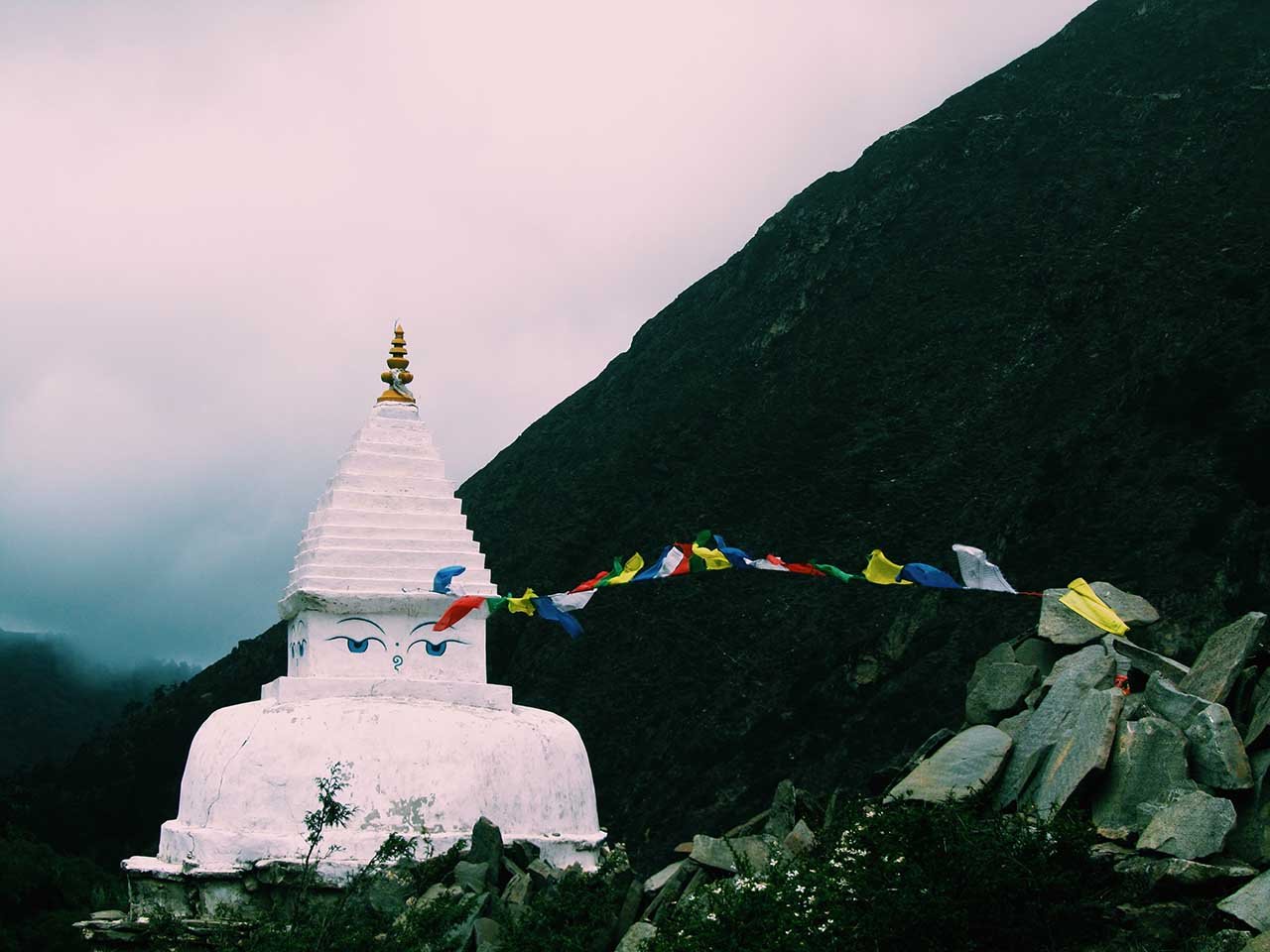
A few more tips for trekking in Nepal
- Pay close attention to weather conditions, especially on days where you have to cross high altitude passes.
- For remote treks, take a guide and listen to whatever he says. A guide is your best friend on those mountains.
- Always hike with a lightweight first aid kit and carry all the essential things needed for a Himalayan trek.
- While you can trek alone in all common trekking trails, it is always advisable to trek in groups. Make friends on the way and trek together.
- We recommend you to buy travel insurance while trekking in Nepal. It is going to be of great help in case of any untoward incidents.
- Learn Nepali to make your trip smoother and make connections with locals more enjoyable.
- Most of the trailhead towns do not have an ATM. So carry enough cash with you while going for the trek in Nepal.
- You can charge your electronic devices in most of the teahouses. While a few do not charge money for charging electronic equipment, but most of them collect a nominal fee.
- You will get simple food options at the teahouses. Remember, the cost of food items will increase as you go higher up the altitude.
- Finally remember, between man and mountains, it is always the mountains who wins. So if you or the guide feels that the weather is deteriorating, do not continue your trek. Bad weather often leads to heavy casualties. As you should listen to your body, you should also pay heed to nature.
Did you like the post? Please let us know in comments below. Please share it with all those planning a trek in Nepal. Pin it for a later read!
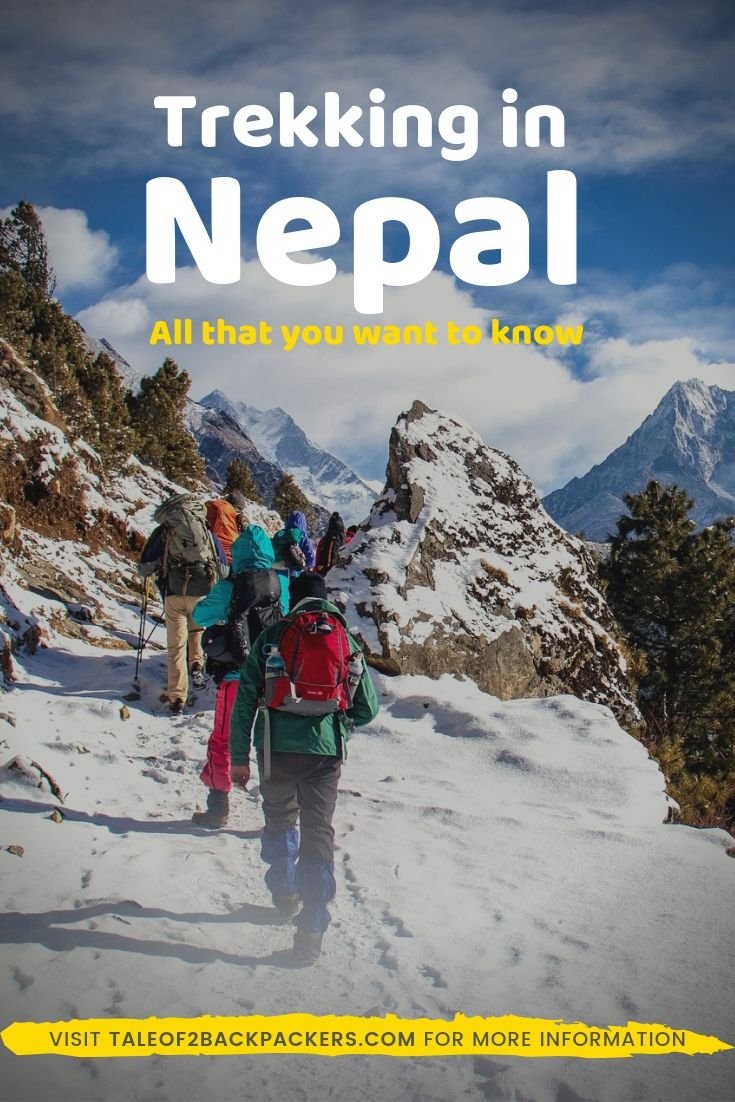









I loved reading through your suggestions for trekking Nepal! It is high on my bucket list! Annapurna Base Camp Trek looks perfect! I’ve never backpacked in the snow, so it sounds like a good entry-level trek for that purpose (while still beautiful!). Thanks for the lovely suggestions. I hope to make it to that part of the world soon!
Thank you Leah. ABC is good for starting. Hope you visit Nepal soon.
This is a very comprehensive guide for trekking in Nepal. This treks always looked very scary to me, but after trekking in the moody Patagonia last year, they don’t look that scary anymore. The only thing that remains more difficult in Nepal than in Patagonia is the high altitude. I had altitude sickness before and I know how bad it can be.
Thank you Anda! Yes, treks can look scary at first, but once you have done one, you would like to do another. But yes, take care about altitude sickness!
This is just what I wanted Amrita. A comprehensive list of trekking options in the land of Adventure Tourism. Couldn’t go trekking the last time I was in Nepal but lets plan a trek in Nepal in 2020, specially in the Upper Mustang area. What say you?
Thank you Arnav. A trek plan in 2020 will be great. Infact, we are planning something in the Upper Mustang area. Let’s do it together then! 🙂
Nepal is famous for its wonderful and adventurous trek and all of them are worth. I have never done trekking before but would check out any moderate level trek like Annapurna Base Camp Trek. Thanks for sharing all tips for trekking like going in a group for trek and also hiring a local mountain guide.
Thank you Yukti! Hope you enjoy trekking in Nepal.
Oh wow, what an adventure you had in Nepal. It’s somewhere that fascinates me, though i’m not sure I’ll ever visit. While I’m not much of a trekker, I’d love to see some of these sights. The Nagarkot trek is the best for me, as it’s the easiest and I’m definitely a beginner. A very interesting read and with plenty of excellent tips.
Thank you Lisa! Thats the best thing about trekking in Nepal – it has all types of treks.
Although I dream of completing the Everest Base Camp trek, I think it would be best to start with an easier trek. The Nagarkot trek or Annapurna Base Camp trek seem do-able to me. The scenery in Nepal is just incredible! Every one of these photos inspires such wanderlust for me. I am doing a four day trek in Peru very soon so maybe with a little training I could attempt one of these longer treks. It is an added bonus to not need a porter on the ABC trek.
This is such a comprehensive post on Nepal treks! To be honest, I never thought of going on any of these treks. But I guess it’s time to prepare myself at least for one of these. Such amazing Himalaya views!
Thank you, Renuka!
I am glad to learn this valuable information
Great reading and extremely comprehensive post – pretty much covers everything…
Thank you!
I cant wait to go back to Nepal and do trekking. I’m planning the Base Camp with Mount Kalesh. Hopefully, borders will be open soon.
Thank you so much for well describing the trekking region of Nepal. This is informative and people can make well plans based on this article.
I appreciate nice information details about the trekking area in Nepal. People can use this data to make informed decisions.
Such an informative article. Thanks for motivating more people to explore real beauty of Nepal.
Thank you!